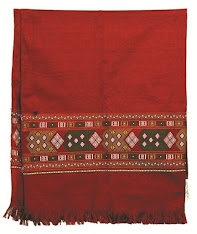April 23, 2010
The Kuki People of Meghalaya
The Kukis are ethnic group that spread throughout the Northeastern region of India, Northwest Burma and Chittagong Hill Tracts in Bangladesh. In Northeast India they are present in all the states except Arunachal Pradesh. This dispersal across international borders is mainly attributed to the British colonial policy. The term ‘Kuki’ is a Bengali word meaning ‘hill people’ or ‘highlander’. According to Lt. Colonel Shakespeare (The Lushai Kuki Clans, Part I, London, 1912) the term ‘Kuki’ has a definite meaning and include Aimol, Chothe, Chiru, Koireng, Kom, Purum, Anal, Lamkang, Moyon, Monsang, Gangte, Vaiphei, Simte, Paite, Thadou, Hmar, Zou etc. G.A. Grierson in Linguistic Survey of India, 1967 stated that the tribes connoted by Kuki are able to understand another’s dialect. Recognising the common ethnicity and identity of the Kukis, the Constitution (Scheduled Tribes) Order, 1950 of the Government of India placed all the Kukis under ‘Any Kuki Tribes’ in the states of Assam, Manipur, Tripura, Mizoram, and Meghalaya.
Due to the various movements for separate administrative units based on ethnicity, Nagaland, Meghalaya and Mizoram were carved out of Assam. The creation of new administrative units deprived the Kukis much of their political interests. Nevertheless they have been living cordially with the majority communities. Such is the case of the Kuki tribes in Meghalaya. When Meghalaya was carved out from Assam by the Assam Reorganisation (Meghalaya) Act 1969, the various Kukis living in the then United Khasi-Jaintia Hills district became indigenous tribes of Meghalaya. Even though a minority, the Kukis in Meghalaya are not negligible in terms of their population. In this essay a brief history of Meghalaya, its social composition and the various governmental policies affecting the minority Kukis are analysed.
Brief history of Meghalaya
Meghalaya, which literally means ‘Abode of Clouds’ in Sanskrit, consist of the Khasi, Jaintia and Garo Hills. The British rulers annexed the Khasi Hills in 1833, Jaintia Hills in 1835 and Garo Hills in 1872-73. The state is the product of movement for the formation of the Eastern Hill State consisting of all the hill areas and the contiguous areas inhabited by people of the same racial stock in Assam. Due to the the assimilative and discriminatory policies pursued by the government of Assam in relation to the minority groups, a section of Khasi and Garo elites started a movement for separate administrative unit. They emphasised their differences from the plains people and blamed Assamese for trying to impose their culture and language and their attempts to dominate the legislature and services.
In 1969, the Indira Gandhi government intended to fulfill the long standing demands of the hill tribals by providing them an autonomous state within the state of Assam covering all the autonomous districts of Assam, i.e., the Garo Hills, Khasi and Jaintia Hills, Mikir Hills, North Cachar Hills and Mizo Hills district. However, the tribes in North Cachar Hills and Mikir Hills were not enthusiastic about the movement and preferred to remain within Assam. The Mizos wanted to have a separate state and launched their own movement. The Assam Reorganisation (Meghalaya) Act of 1969 provided Meghalaya, which comprises of the United Khasi-Jaintia Hills district and Garo Hills district, a semi-autonomous state which came into effect on 2nd April 1970. Subsequently it became a full-fledged state of India on 21st January 1972 with the passing of North Eastern Areas (Re-Organisation) Act, 1971.
Social composition
Meghalaya is predominantly a tribal state. There are seventeen recognised tribes in the state. The Khasis, Jaintias and the Garos are the dominant and generally recognised indigenous tribes of the state. Apart from the three major tribes there are several tribal populations settling in the state since its inception. They are the Bodos-Kacharis, Hajongs, Rabhas, Hmars, Syntengs, Mikirs, Any Mizo (Lushai) Tribes, Any Naga Tribes and the Any Kuki Tribes including (i) Biate, Biete, (ii) Changsan, (iii) Chongloi, (iv) Doungel, (v) Gamalhou, (vi) Gangte, (vii) Guite, (viii) Hanneng, (ix) Haokip, Haupit, (x) Haolai, (xi) Hengna, (xii) Hongsungh, (xiii) Hrangkhwal, Rangkhol, (xiv) Jongbe, (xv) Khawchung, (xvi) Khawathilang, Khothalong, (xviii) Kholhou, (xix) Kipgen, (xvii) Khelma, (xx) Kuki, (xxi) Lengthang, (xxii) Lhangum, (xxiii) Lhoujen, (xxiv) Lhouvun, (xxv) Lupheng, (xxvi) Mangjel, (xxvii) Misao, (xxviii) Riang, (xxix) Sairhem, (xxx) Selnam, (xxxi) Singson, (xxxii) Sitlhou, (xxxiii) Sukte, (xxxiv) Thado, (xxxv) Thangngeu, (xxxvi) Uibuh, (xxxvii) Vaiphei. The non-tribal communities comprises of Bengalis, Marwaris, Nepalis and small sections of communities from different parts of India.
According to the census of 2001, the population of Meghalaya is 23,18,822. The tribes, which number 1,992,862 persons, consist of 85.9 percent of the state’s population. The remaining 14.1 percent of the population is non-tribal. The Khasis constitute 49.54 percent, followed by the Garos with 30.86 percent. The Kukis in the state constitute 0.5 percent of the total tribal population with 10,085 persons. The composition of the major Scheduled Tribes of Meghalaya as per 2001 census is given below.
Name of the Tribe | Total Population | Proportion to Total ST Population |
All Scheduled Tribes | 1,992,862 | 100% |
Khasi | 1,123,490 | 56.4 |
Garo | 689,639 | 34.6 |
Hajong | 31,381 | 1.6 |
Rabha | 28,153 | 1.4 |
Koch | 21,381 | 1.1 |
Synteng | 18,342 | 0.9 |
Mikir | 11,399 | 0.6 |
Any Kuki tribes | 10,085 | 0.5 |
Any Mizo (Lushai) Tribes | 3,526 | 0.2 |
Any Naga Tribes | 3,138 | 0.2 |
Bodo Kachari | 2,932 | 0.1 |
Hmar | 1,146 | 0.1 |
Source: Office of the Registrar General, India, 2001.
NGOs and Governmental policies
Due to the perceived land alienation and threat to demographic changes in the state the Khasi Students’ Union (KSU) in 2000 launched Ksan rngiew movement. This movement is not a public agitation but an instrument to rejuvenate and awake the Khasi people to strive ahead with hope and expectation of a brighter future. One of the demands of this movement placed before the government was to amend the Meghalaya Land Transfer Act, 1971 in order to prevent tribals from other states to acquire lands in Meghalaya. The government under pressure from students’ organisations and other NGOs amended clause (A) Section II of the Meghalaya Land Transfer Act, 1971 on 5th April 2001 that enable only the indigenous tribes of the state to buy and sell land. As per the reports of Meghalaya Legislative Assembly Bulletin, some minor tribal communities like the Rabha, Koches, Boro, Hajongs, Karbis and Lalungs are recognised as normal residents of Meghalaya and are allowed to sell and purchase land among them. The indigenous Kukis living in the state were deprived of such rights along with certain communities like the Nagas and Mizos.
The amendment of the Meghalaya Land Transfer Act, 1971 in 1991 provide some relaxation where land is required for a place of worship by a community, burial or cremation grounds and in cases where land is required to promote the interest of the tribals in the field of education.
Apart from depriving such rights, the government of Meghalaya proposed to delete certain Scheduled Tribes, including the Any Kuki Tribes, from the existing list of Scheduled Tribes in the state of Meghalaya. This agitated the minds of the indigenous minorities living in the state of Meghalaya. In this connection the Any Kuki tribes of Meghalaya under the aegis of Kuki Welfare Committee, Shillong submitted a memorandum to the then Chef Minister Donkupor Roy in 2008 and appealed for protection and retention of ‘Any Kuki Tribes’ in the list of the Scheduled Tribes of Meghalaya. They argued that the Kukis have been living even before the formation of the then United Khasi and Jaintia Hills in 1951 and at present there are more than twenty Kuki (Biate and Vaiphei) villages in Jaintia Hills alone. They also fervently put forward that many of them have been living in Shillong and other parts of the state as indigenous and permanent residents ever since the creation of Meghalaya, although their existence has not been widely recognised.
In the first week of December 2009, tension erupted at Kmaranga Khasi village near Jiribam in Manipur on the proposed eviction of land for setting up Manipur police subsidiary training centre. The KSU (Barak Valley Circle) requested Chief Minister D.D. Lapang for his personal intervention against the eviction notice and claimed that Kamranga Khasi village falls under the jurisdiction of Tousem subdivision in Tamenglong district where the indigenous Khasi people have been settled permanently since 1940s. Whereas the Manipur government maintained that the land occupied by Khasi villagers are ‘khash land’ which no one own but remain as government land. The Kuki Students’ Organisation, Jiribam and Zeliangrong Students’ Union Manipur (ZSUM) supported the claims of the KSU (Barak Valley Circle) and opposed such move of the Manipur government.
Concerned with the loopholes in Meghalaya Land Transfer Act 1971 and its amendment in 2001, the ruling Congress-led Meghalaya United Alliance set up a committee in August 2009 under the chairmanship of Deputy Chief Minister Bindo Lanong to assess the pros and cons of the Land Transfer Act and suggest ways to regulate any further alienation of indigenous land. Eight NGOs from the state, including the KSU and the Federation of Khasi Jaintia Garo People (FKJGP) are part of the committee.
Conclusion
Meghalaya is a relatively peaceful state compared to some other Northeastern states like Manipur, Nagaland and Assam. Since the new millennium various NGOs of the state intensified their movement to secure employment opportunities and check influx of people from Bangladesh and other parts of India, and increasing land alienation. Of late, the spurt of land purchase by tribals from other states in Shillong has been their main concern. The amendment of the Meghalaya Land Transfer Act, 1971 in 2001 prevented the tribals from other states to acquire lands in Meghalaya
The amendment of this act by the Meghalaya government may be justified on the ground of land insecurity. There are vast amount of Scheduled Tribes residing in Shillong and other parts of the state that are not indigenous but their tribe listed among the seventeen recognised tribes of Meghalaya. The government and NGOs need to clearly demarcate and identify the indigenous people of the state and non-indigenous people from other parts of the region even though they may belong to the same tribe. Such action will prevent the abuse of the amended Land Transfer Act.
There is also a concern expressed by KHNAM, the political wing of KSU, of the increasing presence of Scheduled Tribes from other states in Shillong. With the Naga peace talks in the right track and possible solution in 2010, the signing of Suspension of Operations with the various Kuki insurgent groups under KNO and UPF, and the centre’s offer of olive branch to all the armed groups in Northeast India, there is a ray of hope for peace in the troubled states like Manipur and Nagaland. When normalcy is restored in these states, students will have a second thought in leaving the well equipped colleges in their state and when thousands of them remain within the sate it will prevent drain of wealth. This will be one positive step toward economic development.
~ The Writter is Reasearch Scholar of NEHU, Meghalaya
Labels:
Kuki
Subscribe to:
Post Comments (Atom)









0 comments:
Post a Comment